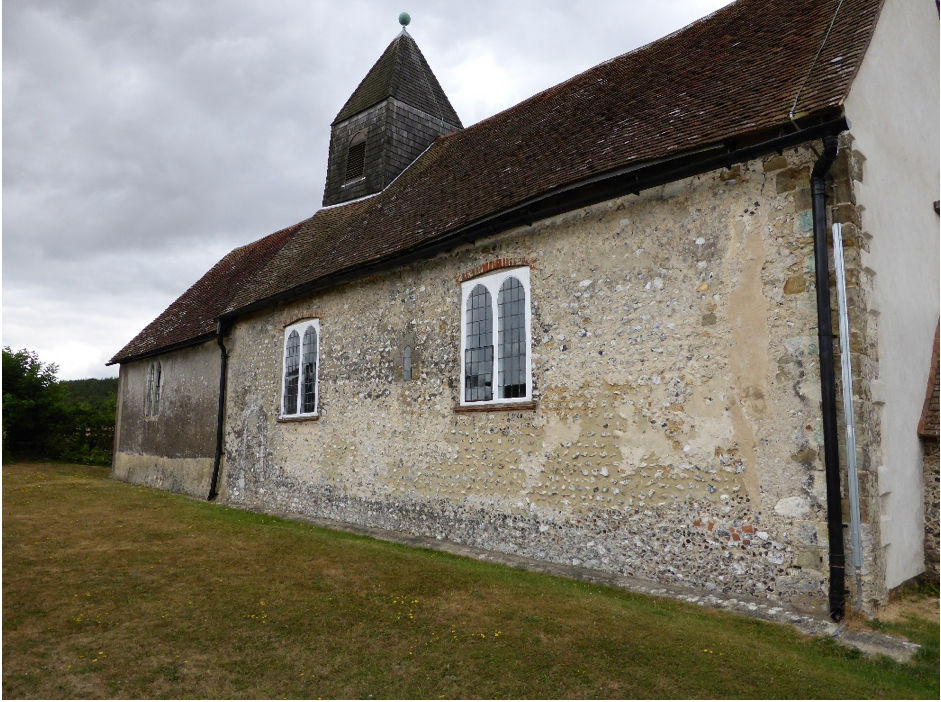Swifts at St Hubert’s Church
- Sep 12
- 3 min read
Updated: Oct 2
Also known as ‘the Little Church in the Field’ this Church has stood here for around a thousand years.

It is situated in an area of outstanding natural beauty, in the South Downs National Park at Idsworth, between Havant and Petersfield. Earl Godwin, head of one of the grandest and most powerful families of Anglo Saxon England, whose most famous son was King Harold, is believed to have had the chapel built sometime around 1030AD. He personally held the adjoining manor of Chalton.

When Hampshire Swifts first visited in 2016 there was thought to be four pairs of Swifts nesting here, three on the north side at higher level and one, remarkably, on the north side of the porch at a height of around 1.6m above ground level. This is the lowest Swift nest that we know about here in Hampshire. On 20 July 2016 there were 13 birds in a party screaming overhead.

In August 2025 Roger and I paid a brief visit to see the Church. This was the first time that I had been back since going to an event here in 2018. The Swift season had ended but I do hope that further repairs here have not disturbed the nest sites or blocked up the entrances. It is not known how long they have nested here, but possibly many hundreds of years. In my view this is as important a part of the Church’s history as the internal wall painting, which was painted in around 1330. We will visit again next summer to check.

Extensive and comparatively recent repairs to the south side of the Church, which takes the brunt of the weather, seem to have excluded the Swifts that most likely nested on this side of the Church in the past. But it was interesting to note that two pairs of House Martins had nested here this year. One pair was still busy feeding young whilst the other birds had already departed. I’m sure that these were not here in 2018. And I’m a bit surprised by the appearance of roots in the lower half of the nest. I’ll go back soon and get some better pictures as these were just taken on my phone. I wonder if it’s possible that the nest had been built originally by Swallows and later taken over by House Martins? No mud will have been available for the House Martins this year so the nests will have survived from at least last year, luckily there are no House Sparrows at this site to break the nests.


Post script: I have been back to take more pictures of the two House Martin nests and am now even more sure that these were built originally by Swallows. I understand that this does happen sometimes but it is unusual and I’ve never seen it before. It is possible that the mud was collected from this pond which used to be part of Idsworth Manor and dates back to at least the 16th century.

In 2020 it was restored with a liner by farmers of the South Downs Farmers Group but I think that its much more likely that mud was collected from near the road to the west of the Church. In most years (not 2025) this area is wet in the spring with plentiful mud, and certainly in 2024 there will have been lots available.

The Church is unusual in having the oak joists protruding through the walls and it is on these that the Swallows built their nests which were subsequently taken over by the House Martins who have extended the sides upwards just leaving a narrow entrance.





Google AI says house martins use fibrous materials, such as grass and plant fibers, in their nests. This material is combined with mud to construct the main structure of the nest and is also used as a soft lining on the inside.